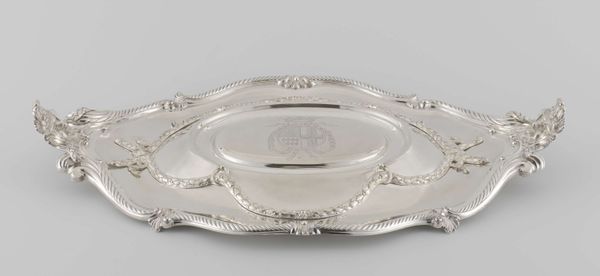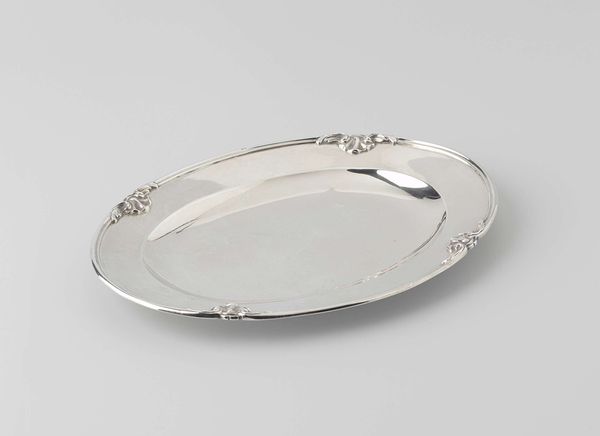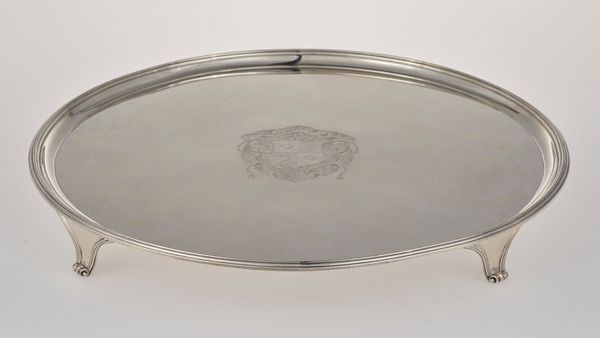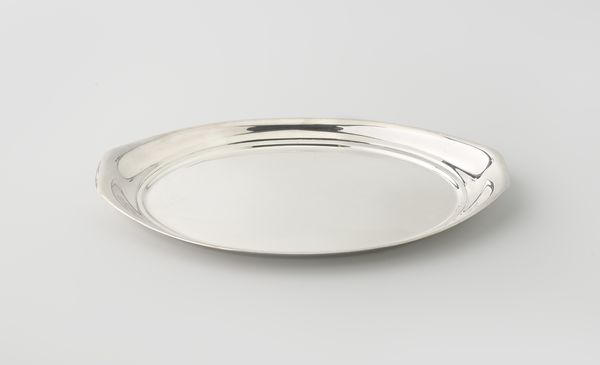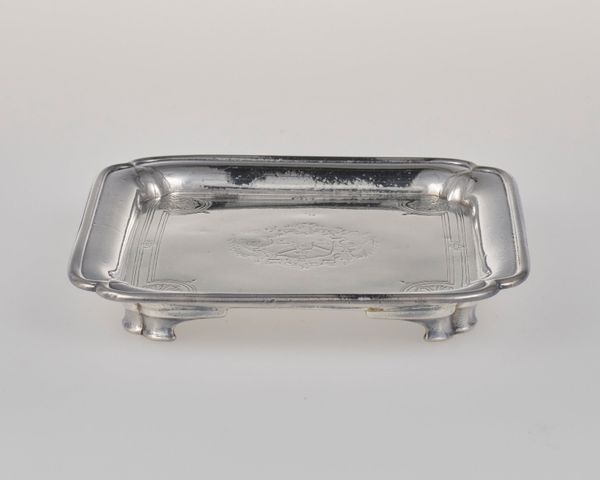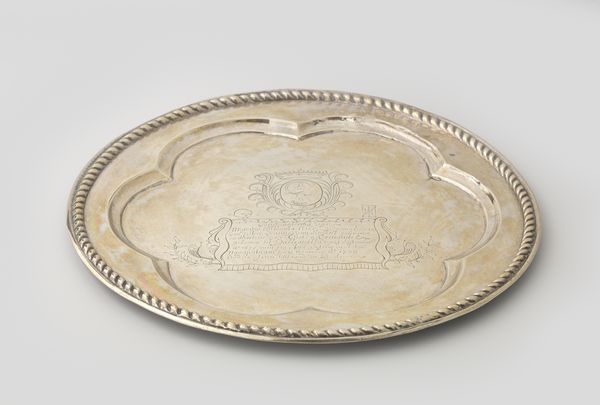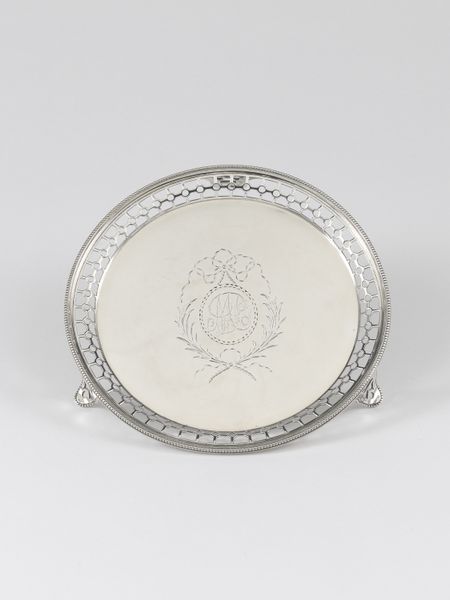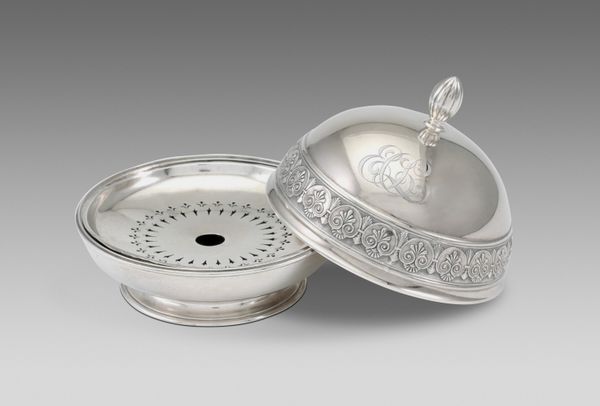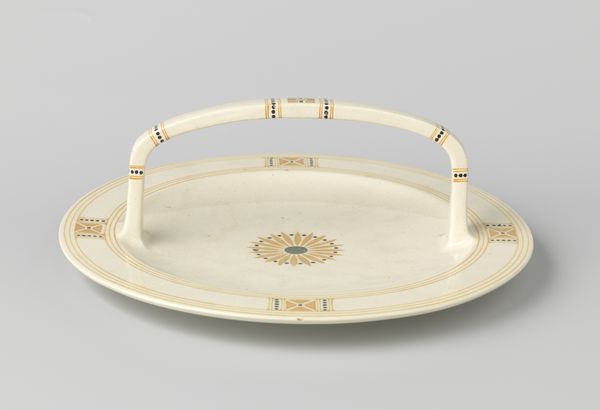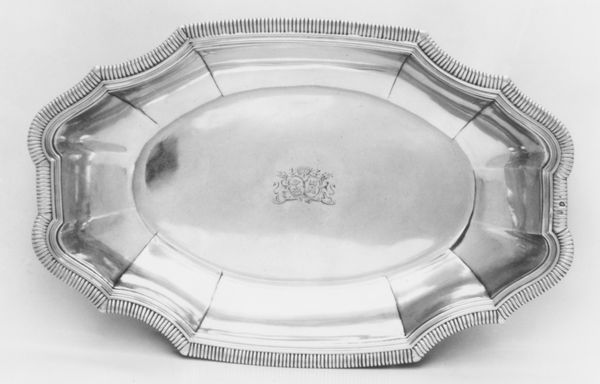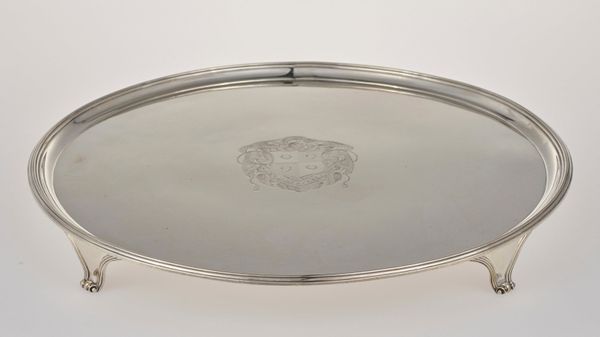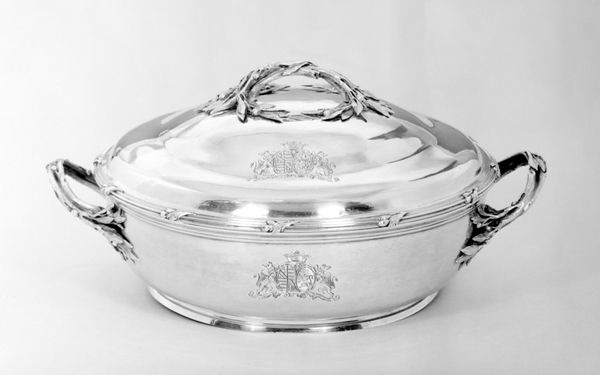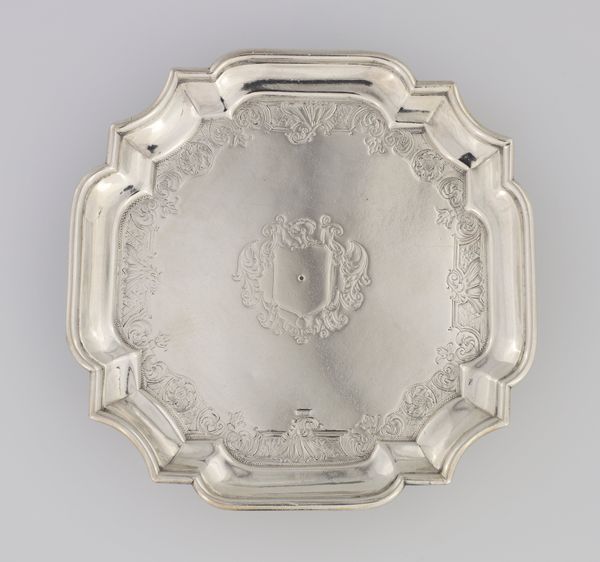
Zilveren presenteerblad, geschenk aan Kiahi Ngabehi Noto Adhi Poero, patih van Grissee, als blijk van verdienste bij de zoutproductie in het jaar 1862 1865
0:00
0:00
silver, metal
#
silver
#
metal
#
islamic-art
#
decorative-art
Dimensions: width 44.5 cm, depth 33.5 cm, height 2.5 cm, weight 1419 gr
Copyright: Rijks Museum: Open Domain
Editor: Here we have a silver presentation tray, created in 1865 by G.F. Bauer. It's actually a gift presented to Kiahi Ngabehi Noto Adhi Poero, a patih – or administrator – of Grissee, in recognition of his contribution to salt production. It’s quite a stately object; I’m intrigued by the dual inscriptions in Dutch and what appears to be Javanese script. What meaning do you glean from these inscriptions and emblems? Curator: Indeed! What appears simple reveals layers of cross-cultural exchange. Silver itself carries weight as a symbol of wealth and status, think about the symbolic language of gifts between cultures and their long association with ritual use. The presence of both Dutch and Javanese texts speaks volumes about the dynamics of colonial relationships – power, collaboration, and perhaps even resistance through localized aesthetics. Editor: So, you're saying the imagery isn't just decorative; it's a deliberate blend of cultural references? Curator: Exactly! Note the strategic placement. Emblems and scripts positioned to convey respect while perhaps also hinting at the recipient's local identity and power. How do such objects navigate the nuances of cultural interaction, reminding us of shared yet potentially imbalanced histories? What stories can objects like these reveal? Editor: That is helpful! I didn’t immediately pick up on all of the subtle implications of power dynamics embedded within. Curator: It demonstrates how everyday objects can operate as rich visual texts, encoding narratives about identity, power, and cultural exchange across generations. What a fascinating find.
Comments
No comments
Be the first to comment and join the conversation on the ultimate creative platform.
